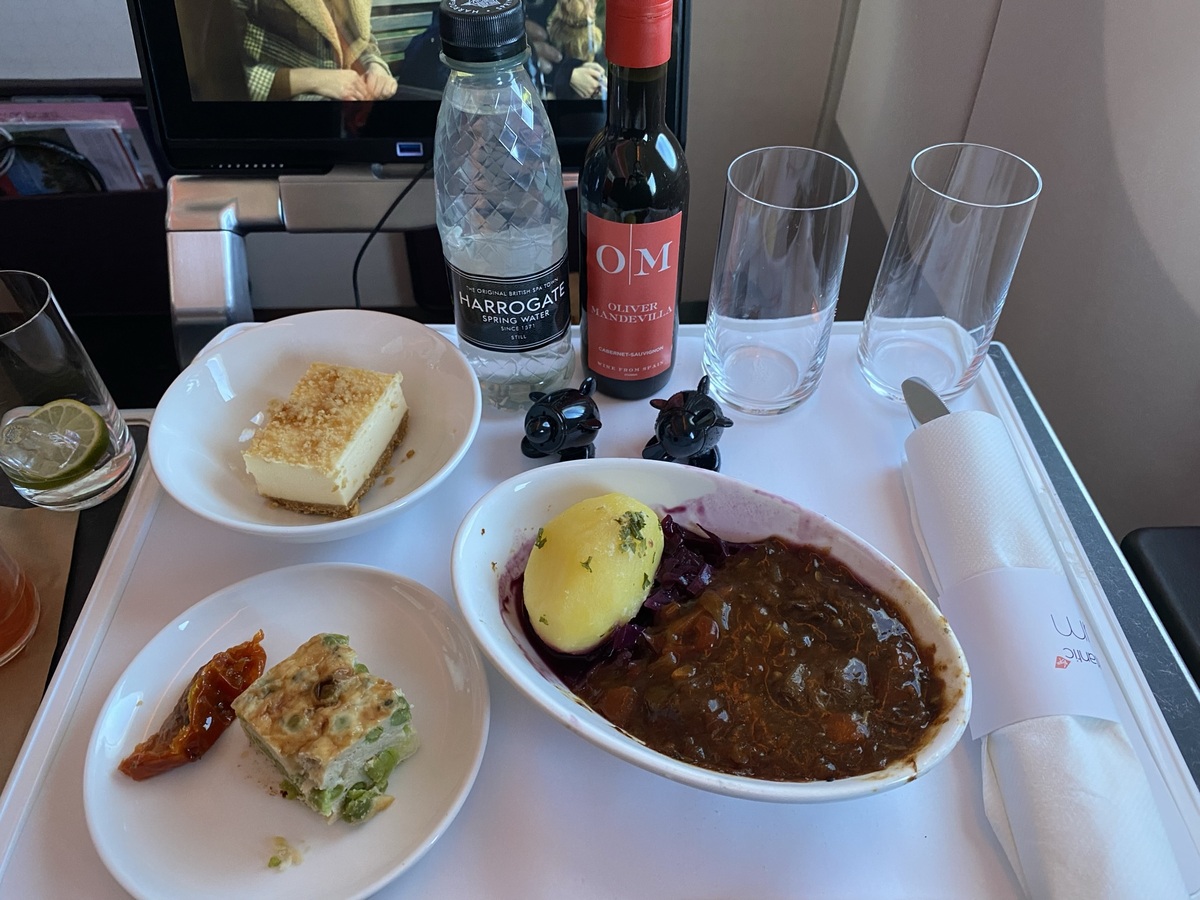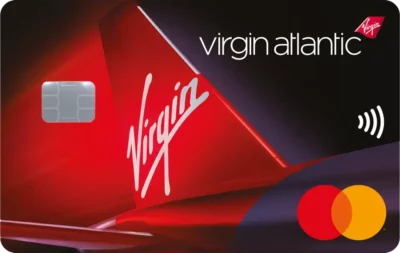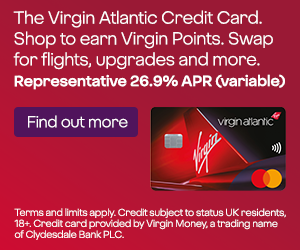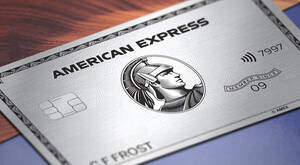Is flying Premium Economy worth it?
Links on Head for Points may support the site by paying a commission. See here for all partner links.
Since joining HfP six years ago, I’ve managed to try a number of different premium economy products on a variety of airlines – most recently flying JAL premium economy to Tokyo.
First introduced in 1992, premium economy has become one of the most profitable cabins for airlines, generating more profit per square metre than even First or Business Class. But is it value for money?

A brief history of premium economy
Before we start, I want to take a quick look at the history of premium economy – aviation’s newest cabin.
The first premium economy cabins were introduced in 1992. Both Virgin Atlantic and Taiwanese carrier EVA Air launched these hybrid cabins to bridge the comfort-canyon between economy and business class.
(This was before the era of lie-flat seats in business class, of course, so the gap between economy and business was smaller. British Airways first introduced lie-flat seats in First in 1995, followed by its first generation Club World seat in 2000. Other airlines slowly followed.)
‘Premium Economy’ wasn’t called that at the time. Virgin Atlantic called it ‘Mid Class’ whilst EVA called it ‘Economy Deluxe’. When it launched, Virgin Atlantic explained its reasons for launching the new product for businesses that could no longer justify business class:
“Over the past year or so many businesses have reviewed their travel policies and some have found it necessary to downgrade from business class to economy. Following an extensive and in-depth research project carried out by Virgin Atlantic and IATA it has been shown that the main requirements for business travellers are improved comfort, segregation, priority check-in and service.”
Premium economy is now more economy-plus than business-minus
At the time, premium economy was a true hybrid product, using upright seats very similar to those in business class but with less leg room and a smaller recline.
Since its introduction, premium economy has remained relatively unchanged whilst business class cabins have evolved substantially. Innovations such as lie-flat seats and all-aisle access in business mean that premium economy now feels decidedly economy-plus than business-minus.
Economy seats have grown ever tighter as airlines densify cabins to compete in a price war on flight comparison websites. This differentiates premium economy even further and makes it a natural upgrade for anyone who wants a little more space but cannot justify the price tag of business class.

The majority of airlines now offer premium economy cabins, although some stragglers still remain. This includes Qatar Airways, which argues that its economy product is competitive with premium economy at other airlines.
It should take a note from a Middle Eastern competitor. Emirates was one of the last remaining holdouts until it introduced the cabin in 2021 (my review here), with CEO Tim Clarke saying they were shocked with the demand for the seat. (He shouldn’t have been, of course. Airlines have been crowing about the success of premium economy cabins for years.)
What is premium economy?
Premium economy is as popular with passengers as it is with airline accountants. It comes with a number of benefits and depending on the airline you’ll get:
- Priority check-in and boarding (behind business class, ahead of economy)
- Checked luggage
- A larger seat, with a few extra inches of width and substantially more legroom and recline
- A larger in-flight entertainment screen
- An upgraded meal and drinks service – often a business class main course with economy starter and desert – with a welcome drink on boarding (but no champagne)
- Better pillows, blankets and an amenity kit
- Additional miles and tier points

How much more expensive is premium economy?
Using the British Airways Low Fare Finder tool, I compared the lowest economy and premium economy fares to some popular destinations from London. I’ve also included some price comparisons with Virgin Atlantic and Singapore Airlines.
New York
- British Airways economy: £360 (hand baggage only)
- British Airways premium economy: £859
- Virgin Atlantic economy: £361 (hand baggage only)
- Virgin Atlantic premium economy: £844
Los Angeles
- British Airways economy: £419 (hand baggage only)
- British Airways premium economy: £1,099
- Virgin Atlantic economy: £399 (hand baggage only)
- Virgin Atlantic premium economy: £1,046
Singapore
- British Airways economy: £506
- British Airways premium economy £1,636
- Singapore Airlines economy: £572
- Singapore airlines premium economy: £1,914
As you can see, premium economy is generally more than twice as expensive as a basic economy ticket, although prices above are based on the lowest available over the next twelve months. The price gap can be smaller on individual flights, making the upgrade to premium economy cheaper than it may first appear.
Don’t necessarily blame the airlines
Whilst premium economy is the most profitable part of the aircraft on a ‘£ per square metre’ basis, the difference in UK Air Passenger Duty is also part of the reason for the price jump.
Premium Economy is taxed in the same way as Business and First Class. The current rates are:
- Economy – £90 per person (£94 on longer routes)
- All other cabins – £216 per person (£224 on longer routes)
This means that £126 of the price difference is simply the additional tax which is paid directly to the Government. Starting your trip outside the UK – or in Inverness which is exempt from APD – is likely to save you money.

Is premium economy worth it?
As always, it comes down to what you are comfortable with.
Taking baggage?
It’s worth remembering that the economy fare comparisons above are hand baggage only fares. If you plan to take a checked bag, you can add between £110 and £130 (round trip) to your costs, depending on the airline:
- British Airways charges £55 one-way
- Virgin Atlantic charges £65 one-way
Extra air miles
It’s also worth factoring in the increased air miles and tier points you’ll earn on each airline if you fly premium economy. The difference between the cheapest economy and premium economy tickets can be substantial.
Let’s take a look at Virgin Atlantic, for example, between London and New York (return). You earn:
- 1,728 Virgin Points in Economy Light
- 6,914 Virgin Points in Premium
That’s a difference of 400%. If you value a Virgin Point at 1p (which we do, if used for premium cabin redemptions) then you’ll earn an extra £50+ of rewards.
We can’t do the same comparison for British Airways because of the switch to revenue based Avios and tier point earning. You now earn in proportion to the cost of your ticket, minus taxes and charges.
Extra tier points towards status
In terms of tier points, you’ll earn double on Virgin Atlantic: between 25 and 50 in economy and 50 and 100 in Premium, each way.
On British Airways, you earn 1 tier point per £1 of your ticket. Taxes and charges are not included. On an economy flight, where the taxes and charges represent a larger proportion of the overall ticket cost, that may mean you earn as few as 150 tier points.
Two Premium returns in a year on Virgin Atlantic would get you Silver status.
Seat selection
Virgin Atlantic gives you free seat selection in Premium (not for all seats, but for some rows) at the time of booking. You now need to pay for seat selection in economy unless you have status.
British Airways charges for seat selection in World Traveller Plus and World Traveller so there is no difference here.
Other amenities
How much you value the additional space, amenities and service in premium is down to you. As a tall person with broad shoulders, the extra legroom and width of premium economy seats are a life saver and the difference between a getting some sleep and none at all. But someone shorter might not be so impressed!
If you are travelling as a couple, the ability to have a row of two seats to yourself (the typical layout is 2-4-2 vs 3-4-3 in economy) may have value.
Conclusion
At the right price – especially if checking bags – it would be silly not to think about upgrading to premium economy. In our example to New York, the price to upgrade to Premium from economy on Virgin Atlantic was occasionally only a few hundred pounds after you factor in the baggage allowance – well worth it, in my opinion. You can offset part of this cost purely with the extra Virgin Points.
On the other hand, you’d be stretched to see the value on a Singapore Airlines flight to Singapore, where the difference can be almost £1,500, although someone is clearly paying it. You might even be able to get an indirect flight to Singapore in business class for close to that price.
There are other options for upgrading, including the Barclaycard Upgrade Voucher which let you upgrade reward flights using Avios, or the Virgin Atlantic credit card voucher. On some flights, you’ll find airlines make attractive upgrade offers at check-in – it’s always worth asking.
If you want to compare premium economy between airlines, here are our reviews from the last couple of years:
- Air Transat Club Class (premium economy) review
- British Airways World Traveller Plus (premium economy) review
- China Airlines premium economy review
- Emirates A380 premium economy review
- Finnair premium economy review
- Japan Airlines premium economy review
- Norse Atlantic Premium review
- SAS Plus (premium economy) review
- Singapore Airlines premium economy review
- Vietnam Airlines premium economy review
- Virgin Atlantic Premium review
- United Airlines Premium Plus review
We’ve also written an in-depth comparison of premium economy on British Airways, Virgin Atlantic and Norse Atlantic. Norse, perhaps surprisingly, is the clear winner in terms of seat size.
PS. If you are not a regular Head for Points visitor, why not sign up for our FREE weekly or daily newsletters? They are full of the latest Avios, airline, hotel and credit card points news and will help you travel better. To join our 70,000 free subscribers, click the button below or visit this page of the site to find out more. Thank you.

How to maximise your miles when paying for flights (July 2025)
Some UK credit cards offer special bonuses when used for buying flights. If you spend a lot on airline tickets, using one of these cards could sharply increase the credit card points you earn.
Booking flights on any airline?
The American Express Preferred Rewards Gold Credit Card earns double points (2 Membership Rewards points per £1) when used to buy flights directly from an airline website.
The card comes with a sign-up bonus of 20,000 Membership Rewards points. These would convert to 20,000 Avios or various other airline or hotel programmes. The standard earning rate is 1 point per £1.
You can apply here.

American Express Preferred Rewards Gold Credit Card
Your best beginner’s card – 20,000 points, FREE for a year & four airport lounge passes Read our full review
Buying flights on British Airways?
The British Airways American Express Premium Plus Card earns double Avios (3 Avios per £1) when used at ba.com.
The card comes with a sign-up bonus of 30,000 Avios. The standard earning rate is 1.5 Avios per £1.
You do not earn bonus Avios if you pay for BA flights on the free British Airways American Express Credit Card or either of the Barclaycard Avios Mastercards.
You can apply here.

British Airways American Express Premium Plus Card
30,000 Avios and the famous annual Companion Voucher voucher Read our full review
Buying flights on Virgin Atlantic?
Both the free Virgin Atlantic Reward Mastercard and the annual fee Virgin Atlantic Reward+ Mastercard earn double Virgin Points when used at fly.virgin.com.
This means 1.5 Virgin Points per £1 on the free card and 3 Virgin Points per £1 on the paid card.
There is a sign-up bonus of 3,000 Virgin Points on the free card and 18,000 Virgin Points on the paid card.
You can apply for either of the cards here.

Virgin Atlantic Reward Mastercard
3,000 bonus points, no fee and 1 point for every £1 you spend Read our full review

Virgin Atlantic Reward+ Mastercard
18,000 bonus points and 1.5 points for every £1 you spend Read our full review









Comments (124)